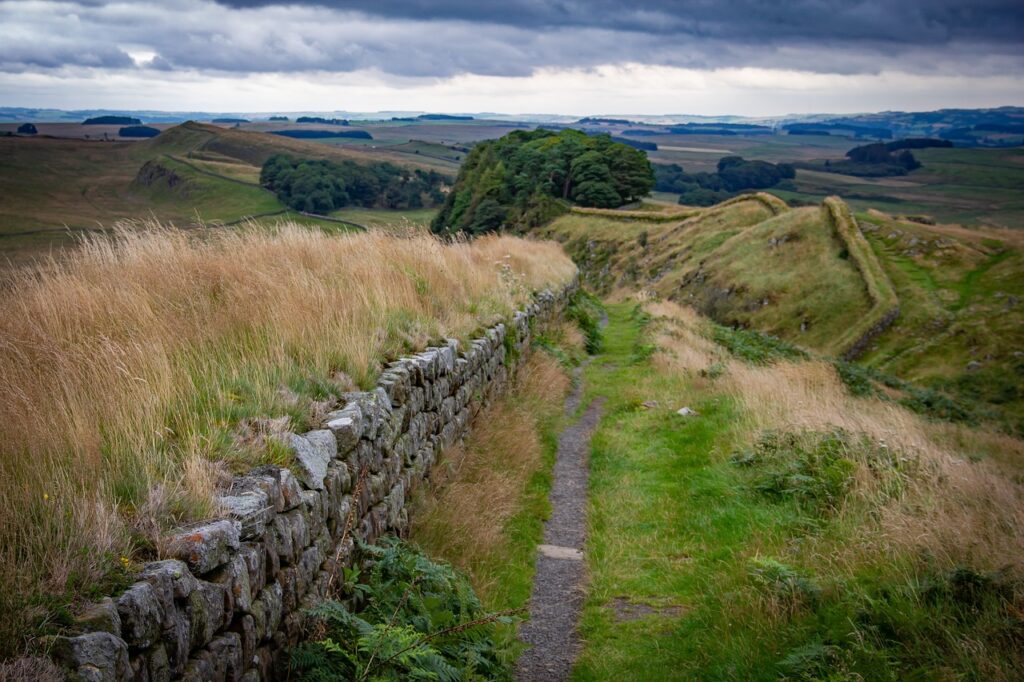The world of Game of Thrones isn’t just brought to life through complex characters and political intrigue—it’s the carefully crafted geography that truly makes George R.R. Martin’s universe feel authentic and lived-in. From the icy wilderness beyond the Wall to the sun-scorched deserts of Dorne, every location on the Game of Thrones Map serves a purpose in shaping the epic tale that has captivated millions worldwide.
Martin’s masterful world-building demonstrates how geography can be just as important as any character in driving a story forward. The vast distances between kingdoms, natural barriers like mountains and rivers, and the harsh realities of climate all play crucial roles in determining who lives, who dies, and who sits on the Iron Throne.
The Seven Kingdoms of Westeros
The North: Stark Territory and Beyond
The North stretches across nearly half of Westeros, yet remains sparsely populated due to its harsh climate and unforgiving terrain. This massive region, ruled from Winterfell by House Stark, encompasses everything from the Neck’s swamplands to the towering Wall that separates the realm from the unknown dangers beyond.
The sheer size of the North becomes a strategic advantage and disadvantage throughout the series. While enemies struggle to conquer such vast territories, the Starks face constant challenges in governing and defending their scattered holdings. The region’s isolation has bred a hardy, independent people who value honor and tradition above the political games common in southern courts.
The Riverlands: Strategic Crossroads
Positioned at the heart of Westeros, the Riverlands serve as the continent’s crossroads, making them both strategically valuable and perpetually war-torn. The region’s network of rivers provides fertile soil and trade routes, but also makes it nearly impossible to defend against invading armies.

House Tully’s seat at Riverrun demonstrates the double-edged nature of controlling this territory. While the lords of the Riverlands can influence trade and communication between the other kingdoms, they also bear the brunt of conflicts as armies inevitably march through their lands.
The Vale: Mountain Fortress Politics
The Vale of Arryn represents one of the most defensible positions in Westeros, protected by the Mountains of the Moon and accessible primarily through the treacherous mountain pass leading to the Eyrie. This natural fortress has allowed House Arryn to remain largely neutral in many conflicts, though isolation comes with its own set of challenges.
The region’s mountainous terrain creates a unique culture where honor and tradition run deep, but political stagnation can occur when rulers become too removed from the realities facing the rest of the realm.
The Westerlands: Gold and Power
The Westerlands’ wealth comes from its abundant gold mines, which have funded House Lannister’s rise to power. The region’s western coastline provides access to maritime trade, while its proximity to the capital makes it politically influential.
This combination of natural resources and strategic location explains how the Lannisters became one of the most powerful families in Westeros, able to buy loyalty and fund armies when needed.
The Reach and Beyond
The fertile lands of the Reach, ruled by House Tyrell from Highgarden, represent the agricultural heart of Westeros. This region’s ability to feed large populations makes it invaluable during times of war and famine. Meanwhile, the Stormlands’ harsh weather patterns and the unique desert culture of Dorne each contribute their own distinct flavors to the continental landscape.
Beyond the Wall: The True North
The lands beyond the Wall represent the ultimate frontier in Martin’s world—a place where maps become unreliable and legends may be reality. This frozen wilderness stretches for thousands of miles, home to wildling tribes, ancient forests, and creatures that most southerners consider myths.

The Wall itself stands as one of the most impressive structures in fantasy literature. Rising 700 feet high and stretching 300 miles across the continent, it serves as both a physical barrier and a psychological one, separating the “civilized” Seven Kingdoms from the unknown dangers of the far north.
The Night’s Watch, guardians of this ancient fortification, have gradually declined over the centuries as people forgot the original purpose of their vigil. This decline mirrors how societies often lose sight of important truths when immediate threats seem distant.
Essos: The Eastern Continent
While Westeros provides the primary setting for political intrigue, Essos offers a completely different flavor of adventure and exotic cultures that expand the story’s scope far beyond the familiar kingdoms.
The Free Cities and Trade Networks
The Free Cities of Essos represent a fascinating alternative to Westeros’ feudal system. Cities like Braavos, with its powerful Iron Bank, and Pentos, with its merchant princes, show how different political structures can emerge based on geography and culture.
Braavos, built among lagoons and islands, became a haven for escaped slaves and developed into a maritime powerhouse. Its unique geography shaped a culture that values secrecy, skilled seamanship, and financial prowess over traditional noble bloodlines.
Slaver’s Bay and the Dothraki Sea
The eastern regions of Essos showcase how geography influences social structures. The ancient cities of Slaver’s Bay—Meereen, Yunkai, and Astapor—built their economies around the slave trade, partly due to their strategic positions along trade routes connecting east and west.

The vast Dothraki Sea, a seemingly endless grassland, created a nomadic horse culture that views permanent settlements with disdain. This geographic reality shaped the Dothraki into fierce warriors whose entire way of life revolves around movement and conquest.
Strategic Locations That Shape Destiny
Certain locations on the Game of Thrones map hold disproportionate importance due to their strategic value, making them focal points for major plot developments.
King’s Landing, positioned where the Blackwater Rush meets Blackwater Bay, controls naval access to the continent’s interior while serving as the political center of the realm. Its position makes it both powerful and vulnerable, as demonstrated repeatedly throughout the series.
Harrenhal, the largest castle in Westeros, sits at a crucial crossroads in the Riverlands. Despite its imposing size, the castle has proven more curse than blessing to its occupants, illustrating how even the most impressive fortifications can become strategic liabilities.
The Twins, controlled by House Frey, demonstrate how geography can elevate minor houses to major importance. By controlling the only practical crossing of the Green Fork, the Freys leveraged their strategic position to gain influence far beyond their military strength.
Geography as Plot Driver
Martin brilliantly uses geographical realities to create authentic constraints that drive plot development. Characters can’t simply teleport across continents—they must deal with the time, expense, and dangers of travel. Winter’s approach threatens food supplies and makes military campaigns nearly impossible.
These geographic constraints force characters to make difficult decisions and create opportunities for unexpected alliances. When Tyrion Lannister travels the long road to the Wall, or when Daenerys must navigate the political landscape of Slaver’s Bay, geography becomes an active participant in their stories.
The map also influences character development, as different regions produce different types of people. The hardy Northmen, the sophisticated courtiers of the Reach, and the fierce independence of the Dornish all reflect their geographic origins.
From Page to Screen
HBO’s adaptation of Martin’s world required translating detailed written descriptions into visual reality. The production team’s choices in representing locations like the Red Keep, Winterfell, and the Wall helped define how millions of viewers would forever picture these iconic places.
The show’s success sparked interest in interactive maps and detailed fan analyses that continue to deepen appreciation for Martin’s geographical creation. These resources allow fans to trace character journeys and better understand the strategic decisions that drive the plot.
Conclusion
The Game of Thrones map represents far more than background scenery—it’s an integral character that shapes every aspect of the story. Martin’s attention to geographical detail creates a world that feels authentic and lived-in, where distance matters, weather affects outcomes, and natural barriers shape human destiny.
This careful attention to geography has influenced countless other fantasy works and demonstrated how thoughtful world-building can elevate storytelling to new heights. The map of Westeros and Essos continues to captivate fans, serving as a testament to the power of geography in creating compelling fictional worlds that feel as real as our own. For more information about George R.R. Martin’s literary masterpiece, see A Song of Ice and Fire on Wikipedia.
Whether exploring the frozen mysteries beyond the Wall or the sun-baked streets of King’s Landing, readers and viewers continue to find new details and connections that make Martin’s world endlessly fascinating to explore.





